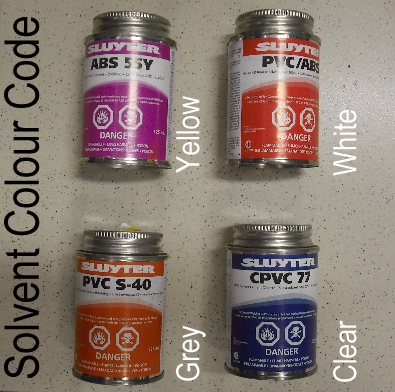I think that most of us use the word glue when we are talking about installing waste or water supply lines. We glue pipes and fittings together right? It just doesn't sound right when we say "I melted the
p-trap to the vanity drain" but that is what we are doing when using solvents to connect pipes and fittings. Solvents are not a glue, it really melts the plastic. Within seconds after the solvent has been applied the two pieces "glue" together become fused as one. If a mistake has been made the only way to correct it is to cut out the wrongly installed section and start all over again.
Although using solvents is pretty straight forward there is no room for error. It is important to use the right type of solvent for each type of pipe. None of the plumbing solvents are interchangeable. To avoid costly mistakes let's have a look at some of the things you should know before making changes or additions to the plumbing system.
- Cutting and preparing pipes for assembling
- Dry fit the pipe and fitting.
- Apply cleaner or primer to PVC pipe and fittings.
- Proper way of applying solvent cement.
- ABS to PVC connections and special solvent to be used.
- CPVC pipes and solvent to be used.

Colours as printed on the label for each application |